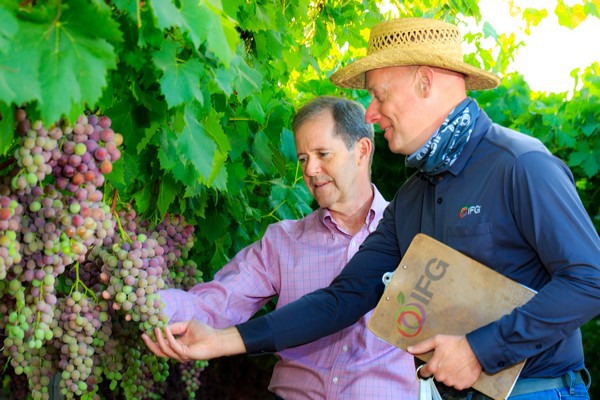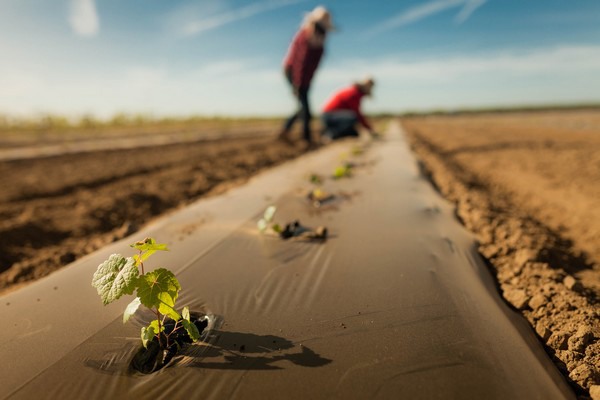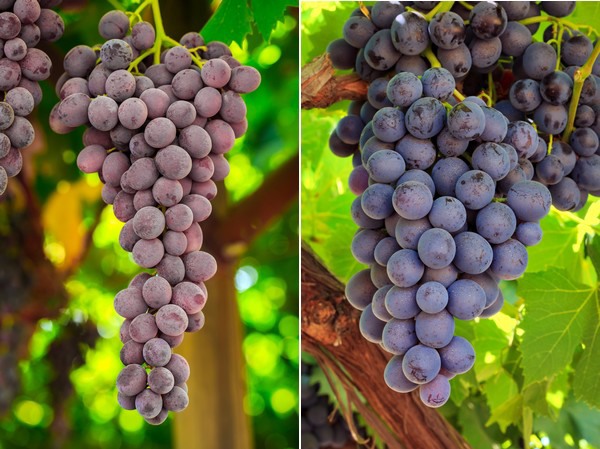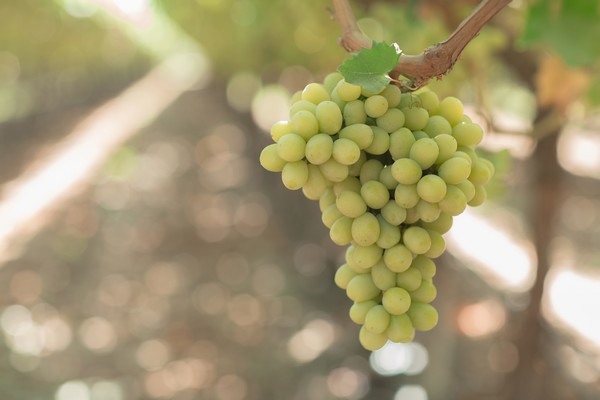Candy Snaps™. Jack’s Salute™. Sugar Crisp™. And of course…Cotton Candy™.
Everyone following the grape industry, very likely recognizes these names as a sampling of the newer varieties of grapes in the marketplace today. As Andy Higgins, CEO of table grape breeder IFG in Bakersfield, California, points out, consumers have had increased access to multiple varieties of grapes recently--particularly so in the past five to six years. Here, he shares insights on variety developments and where the industry is headed in this regard.
 Andy Higgins (left) and Dr. Chris Owens, lead plant breeder, inspect grape varieties.
Andy Higgins (left) and Dr. Chris Owens, lead plant breeder, inspect grape varieties.
When it comes to producing a new variety, that takes some seven to 10 years in development, with two or three of those years alone dedicated to growers putting it into commercial production at volumes large enough for retail distribution. IFG recently introduced three new varieties of grapes: Torch™ (a larger, early red seedless with mild muscat flavor); Bebop™ (a mid-season red seedless with nuances of cherry); and Julep™ (a mid-season black seedless with Labrusca spicy flavor and hints of herbs and mint). IFG groups its varieties into four classifications of flavors: Tropical/Fruity, Muscat, Toffee and Exotics.
Focusing on characteristics
“We’re entirely non-GMO. But we focus on creating a diversity in our gene pool that brings in a lot of traits and characteristics now being seen in our varieties,” Higgins says, noting IFG is expanding its R&D program via a new lab in its McFarland, California facility. “We map the genome of each variety we have and hone in on characteristics we want to bring out, such as firmness of flesh. This allows us to know what parent to use to develop our crossing plans so we can effectively work towards making improvements in our existing lines.”
 Grape seedling plantings in McFarland, California.
Grape seedling plantings in McFarland, California.
Those new varieties also need to strike a balance between what consumers want and what growers need.
Consumers look for good taste, and a memorable, great eating experience which includes a good mouthfeel around crisp fruit with good aroma and is juicy (amongst other characteristics). “Consumer research shows that more than half of consumers look for a grape that tastes like a grape. They want a good eating experience that isn’t bland or lifeless--they want character in it,” says Higgins.
Addressing grower concerns
Meanwhile, growers, under continued cost and climate pressures, are also looking for good yields, adaptability in changing climates, and more from new varieties. “In many of the table grape growing regions, we’re seeing increasing incidents of summer rains and higher humidity. Most table grapes really like to grow in hot and dry conditions. We’re looking to make them more adaptable and grower-friendly,” he says.
 Two of the new varieties at IFG: Bebop (left) and Julep.
Two of the new varieties at IFG: Bebop (left) and Julep.
With the market broken down to approximately 45 percent green, 45 percent red, and 10 percent black grape varieties available, IFG’s breeding efforts reflect that. Though Higgins notes color isn’t as much a concern for consumers. “They don’t have much of a preconceived notion that a grape should be black, red, or green. They’re buying it based on flavor. We have a variety called Candy Snaps™ that’s strongly strawberry flavored. It’s a red grape, but my guess is they would buy it if it were a black or green grape because they’re buying for flavor,” he says.
Another fruit in the market also used to be largely sold by color--apples--and today, they’re more sold by name thanks to increased variety developments on that fruit. “That’s the direction we see the grape category going in as well. Consumers are forming opinions about the names they prefer,” Higgins says.
The future for grapes
So looking ahead, where does Higgins see the grape industry in 10-15 years? “The variety development will continue. I think the best is yet to come,” he says.
 Cotton Candy grapes.
Cotton Candy grapes.
He also notes how those varieties are presented will also evolve away from the plastic bags seen in groceries now. “Anything sold by the pound is a difficult item to work out, particularly for self-checkout. We need to think about how shoppers engage with our product and the changes required to support that change,” he says. Looking at Europe, for instance, new pack sizes are being seen--anything from a 4 oz. package to a 2 lb. one, and also bi- and tri-colors of grapes into one package. “There’s also the growth in online shopping where you’re relying on someone else to select and handle your fruit. A more durable container is going to be a better fit than a bunch bag,” Higgins says.
There will also be continued focus on making grapes easier to grow, handle, and ship. “We’ll continue to see the push on growing regions--it’ll be driven by climate as well as water,” says Higgins. “There are regions taking grapes out because of the ongoing restrictions around water. It’s going to push grapes into regions of the world that aren’t an A+ for growing but maybe an A or an A-. Maybe it’s got water, but it’s also a little more humid and can work.”
 For more information:
For more information:
Michele Nachum
IFG
michelen@bastionagency.com
https://www.ifg.world/
